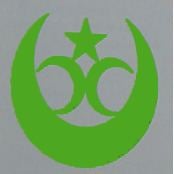Active 1941 - 1945 Strength 8,000 | ||
 | ||
Leaders Nešad Topčić, Ibrahim Pjanić | ||
Green cadres (paramilitary) (Bosnian: Zeleni kadar) was a Bosniak nationalist paramilitary force during World War II. They were founded in early December 1941 as a reaction to a massacre on Bosniak men and woman carried out in Foča by the Serb Chetniks. The organisation was formed in poor conditions and was not so supported at first by the Croatian puppet government. They rose to power after the Partisans started to burst deeper into Bosnia. Their leader was Nešad Topčić.
Contents
History
On 5 December 1941 the Italians in agreement with the Chetnik commander Sergej Mihailović gave the city of Foča under Chetnik control, the Bosniak populated parts of the town started organizing their own "Muslim Defense Force". The poorly armed defense units couldn't prevent the massacres of Bosniaks in the Podrinje area of Bosnia. After several attacks and massacres mainly against the civilians of that area, the prominent Bosniak leaders held a conference in Sarajevo on 28 August 1942 at which it was made clear that the NDH government was not doing anything in the defense of the Bosniak population in Bosnia and Herzegovina. That's why the prominent Bosniak leader Muhamed ef. Pandža made a statement where an immediate action of the NDH government is needed. They founded and proclaimed the "People's Committee of the National Salvation of Bosniaks" and the first tasks of the committee were to found the first Bosniak defense force after the fall of the Kingdom of Yugoslavia. Some of the members of the conference led by Topčić went to Berlin to request from the Germans the establishment of an autonomous Bosnia and Herzegovina. Another two meeting were held but didn't get any successful result and the situation of the Bosniak population in NDH remained desperate.
Statute
The conference also confirmed the statute of the defense forces. The statute contained many points but the main 4 that were related to the Green Cadres were:
- Protection of Bosniak populated areas in Bosnia
- Controlling the movement of Orthodox population in these areas.
- The planning and preparations of action of the Green cadres need to be done with strict confidentiality.
- Traitors will be executed.
1943 reorganization
After the Partisans carried out several attacks in northeast Bosnia and suffered big losses in men, the key officials supporting the militia left it and joined side with the Partisans or the NDH army. The biggest reason for the reorganization was the death of Muhamed Hadžiefendić and the destruction of his "Muslim-Volunteer" legion. The Green cadres did not intend to be on any side but they were occasionally gifted with supplies which made them carry on. The organisation was present in most towns in Bosnia and its main purpose still was to protect the civilian population from the chauvinist Chetnik forces.
End of the war
With the rapid advance of Tito's partisans in 1945 it was clear that the NDH government together with other Axis factions would collapse with the capitulation of Germany in May 1945. Most of the Green Cadres units which still were under control of some town councils took over control in agreement with the Partisans. Some of the units of the Green Cadres joined the Partisans and together liberated some areas in Bosnia. Most famously was the help in the liberation of Sarajevo were parts of the Green Cadres were incorporated into the 16th Partisan Muslim Brigade.
